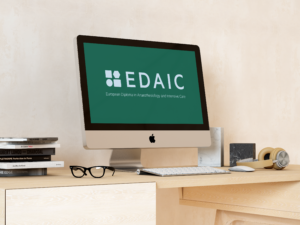Newsletter 2022
Newsletter September 2022: Clinical practice guidelines as a means to increase the quality of clinical care throughout Europe
Prof. Peter Kranke
ESAIC Guidelines Committee Chair
For many years the European Society of Anaesthesiology and Intensive Care (ESAIC) has been strongly supporting the development of high-quality, evidence-based guidelines as a tool to harmonise and improve clinical practice in anaesthesia, perioperative medicine, intensive care, emergency medicine as well as pain therapy throughout Europe.

Here are the five major purposes of clinical practice guidelines, according to the Institute of Medicine´s Intent of Clinical Practice Guidelines (1):
- Assist patients and practitioners in clinical decision making
- Educate individuals or groups
- Assess and ensure the quality of care
- Allocate healthcare resources
- Reduce the risk of legal liability for negligent care.
But there are also many misconceptions regarding the meaning and use of clinical practice guidelines. These may include (but are not limited to) the assumptions that clinical guidelines should be used as (2):
- Reimbursement policy
- Performance measure
- Legal precedents
- Measures of certification or licensing
- Selection criteria or public reporting
- Recipes for „cookbook medicine“.
Although these latter assumptions are considered as not being appropriate direct purposes of guidelines, one will have to acknowledge that guidelines have a significant influence on the quality of care and, in this way, are also able to steer the financing flows in the health care system.
Trusting the quality of the recommendations is an essential criterion in the preparation of clinical practice guidelines. There are numerous recommendations to achieve this purpose. Frequently included aspects cited elsewhere [https://www.nap.edu/catalog/13058/clinical-practice-guidelines-we-can-trust] recommend that guidelines should:
- be based on a systematic review of the existing evidence
- be developed by a knowledgeable, multidisciplinary panel of experts and representatives from key affected groups
- consider important patient subgroups and patient preferences as appropriate
- be based on an explicit and transparent process that minimises distortions, biases, and conflicts of interest
- provide a clear explanation of the logical relationships between alternative care options and health outcomes, and provide ratings of both the quality of evidence and the strength of the recommendations
- be reconsidered and revised as appropriate when important new evidence warrants modifications of recommendations.
In order to meet these requirements, ESAIC has adopted a number of institutional rules and procedures to guide the drafting of guidelines.
The actual preparation of a guideline is coordinated by the specific task force. Its main purpose is to oversee the searching for and appraisal of evidence-based research and to ensure that the evidence is taken into account in the final guideline draft, following well-established methodological requirements and tools. But first, relevant clinical questions need to be framed and transferred into PICO (patient, intervention, outcome, comparator) questions that help to create a comprehensive search strategy for relevant literature. The actual search is usually performed by a designated specialist. Ideally, there is a methodologically experienced member of the task force who ensures that the ESAIC rules for the preparation of the guideline are appropriately taken into account. Otherwise, an external colleague should support the team in methodological matters. For this reason, a methodology group was created two years ago to promote and standardise guidelines, methodology tools and techniques.
After the literature has been searched, the core task is to draft the guideline and also make sure to highlight those items where evidence is lacking or ambivalent. Expert opinions are not excluded but should be clearly presented as such. Thus, such clinical practice statements based on the experiences of the guideline task force (and possibly incorporating the expertise of a wider reference group) could be developed in addition to recommendations for the PICO questions based on the existent evidence. The guideline task force may produce these clinical practice statements (rather than solely developing evidence-based recommendations) on important topics when there is a lack of research evidence, no pre-defined PICO, and, nonetheless, the conviction that the points addressed add important aspects to the overall guideline topic. The assessment of the literature being grouped into the developed PICO questions follows GRADE (Grading of Recommendations, Assessment, Development and Evaluations) as a transparent framework for developing and presenting summaries of evidence and providing a systematic approach to making clinical practice recommendations [https://www.wolterskluwer.com/en/solutions/uptodate/policies-legal/grading-guide].
It would be desirable to receive even stronger support from methodologically experienced colleagues who can assist the guideline task force members in the literature evaluation; this is rather time-consuming but a necessary part of ensuring the evidence’s quality and creating trustworthy recommendations.
After the final draft of the recommendations has been prepared and agreed upon as part of a Delphi process, the recommendations are displayed on the ESAIC website in order to ensure that ESAIC members can comment on the findings of the task force. The subsequent feedback should be discussed by the guidelines task force and, if approved, then may be integrated. As a final step, the guideline will be published on the ESAIC website and in the European Journal of Anaesthesiology and Intensive Care.
The guideline committee defines the requirements and the course of action for an ESAIC guideline. It further oversees the process of identification and prioritisation of topics as well as preparation, dissemination, evaluation and finally the initiation of updating ESAIC guidelines. The committee is responsible for selecting ESAIC Guidelines Task Forces and maintains relationships with various academic societies and scientific groups deemed necessary in preparing collaborative guidelines. The guidelines committee further suggests methods to implement guidelines and ways to inform ESAIC members. It consists of one chairperson, a past chairperson, members, as well as representatives of various bodies (EJA, EBA, NASC, Scientific Committee Chairperson, Trainee committee). The guideline committee is very glad to enjoy the full support of the ESAIC administration.
In the end, the ESAIC members have the most important role to play: to anchor the recommendations of the guidelines in everyday life and translate them into clinical care. Too often, this implementation part is the weakest link in the chain and the most difficult to achieve. To strengthen the last step in the guidelines production process, national endorsement of the guidelines and an adequate dissemination campaign of its content are crucial.
This paper is addressed to all the ESAIC members. Each of them is called upon to actively participate in the creation of the guidelines. This voluntary contribution cannot be valued and appreciated highly enough.
For further information and completed as well as ongoing projects, please be referred to the guideline committee on the ESAIC website
References
- Ruhl D et al Otolaryngol Head Neck Surg 2017;157:175
- Rosenfeld R et al. Otolaryngol Head Neck Surg 2013;148:S1-55
[maxbutton id=”1″ url=”https://www.esaic.org/newsletter/” text=”Read the Newsletter” ]










